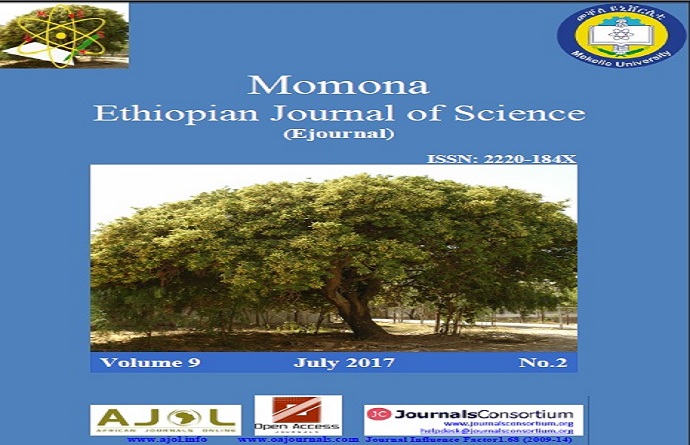Effect of Different Cereal Blends on the Quality of Injera a Staple Food in the Highlands of Ethiopia
Abstract
Majority of the Ethiopian population are dependent on tef (Eragrostis tef (Zucc) trotter) flour to make injera, a staple food in Ethiopia, although injera could be made from different cereals. The price of tef, however, is high and the yield potential of the crop is low. Thus, searching for alternative cheaper grains and developing a blend of different cereal flours that can produce injera of acceptable quality and improved nutritional value would be important. This study was conducted to evaluate the sensory quality of injera made from a blend of different cereals (Tef, barley, sorghum and maize) with differing ratios: 100, 75, 50 and 25%. The sensory evaluation of injera was conducted at Mekelle University in a replicated trial. The results revealed significant differences among the cereal flour blends in injera texture, mouth feeling, suppleness and overall rate, while colour, taste and the appearance of injera surface gas holes were non- significant. Injera made from 100% tef flour got the highest preference rank in terms of the texture, mouth feeling, suppleness and overall ratings. Injera made from 50:50 tef + barley blend was the second best in both texture and suppleness followed by 50:50 tef + sorghum, 50: 50 tef + maize blends and tef + barley + sorghum blend of equal ratio. Similarly, results from blend of tef + barley + maize, tef + sorgum + maize and from the four varietal blends in equal ratios produced very good injera quality. From the study results injera quality ranked next to sole tef (tef + barley, tef + sorghum, tef + maize in 50:50 blends and tef + barley + sorghum in equal ratios) could be used as an alternative option for injera utilization and could provide nutritional and dietary benefits to consumers.
Downloads
References
Abraha, A., Uhlen, A.K., Abay F., Stefan, S & Åsmund,B. 2013. Genetic Variation in Barley Enables a High Quality Injera, the Ethiopian Staple Flat Bread, Comparable to Tef. Crop Science 53:1-11. DOI: 10.2135/cropsci2012.11.0623.
Central Statistical Agency (CSA). 2017a. Total Population size, Addis Ababa, Ethiopia: http://www.csa.gov.et/index.php/ehioinfo-internal
Central Statistical Agency (CSA). 2017b. Agricultural sample survey 2016/2017 (2009 E.C.) statistical buletin on Area and Production of major Crops (Private Peasant Holdings, Meher season), Central Statistical Agency, Addis Ababa, Ethiopia.
Gebrekidan, B & Gebrehiwot, B. 1982. Sorghum injera preparations and quality parameters. In: L. W. Rooney and D. S. Murty (Eds.), Proceedings of the International Symposium on Sorghum Grain Quality, ICRISAT, Patanceru, India, pp. 55-66.
More inside the PDF
Copyright (c) 2018 Momona Ethiopian Journal of Science

This work is licensed under a Creative Commons Attribution 4.0 International License.
COPYRIGHT AND LICENSE POLICY
The Momona Ethiopian Journal of Science accepts the manuscripts for consideration with the understanding that the manuscript has not been published and is not under consideration for publication elsewhere. Only original articles will be considered for publication if they have been published previously as abstracts, but not if they have been published previously as extended abstract (>1000 words). This applies to both electronic and print versions of the journal. The authors should assign copyright ownership to the Editorial Office of MEJS in the event that the manuscript is accepted for publication in the Momona Ethiopian Journal of Science. All accepted manuscripts must be accompanied by a copyright statement signed by all authors. A copy of the copyright form will be supplied along with the final reviewed version of the manuscript that is sent for final proof- reading. Authors may make multiple copies of the form if necessary and send to the Editorial Office with author’s signature(s) even individually.
All articles published by Momona Ethiopian Journal of Science (MEJS) are Open Access under the Creative Commons Attribution License (http://creativecommons.org/licenses/by/4.0). Under this license, authors retain ownership of the copyright for their content, and anyone can copy, distribute, or reuse articles as long as the author and original source are properly cited. In all these cases for re-use, the authors will be given proper credit to the original publication in MEJS.
